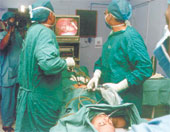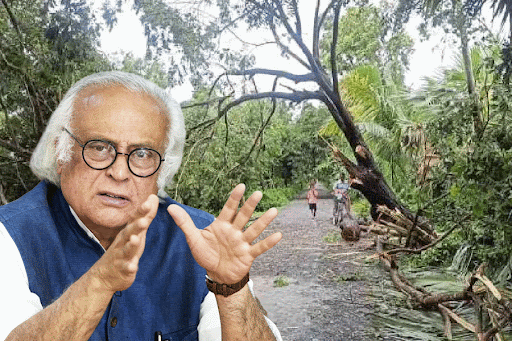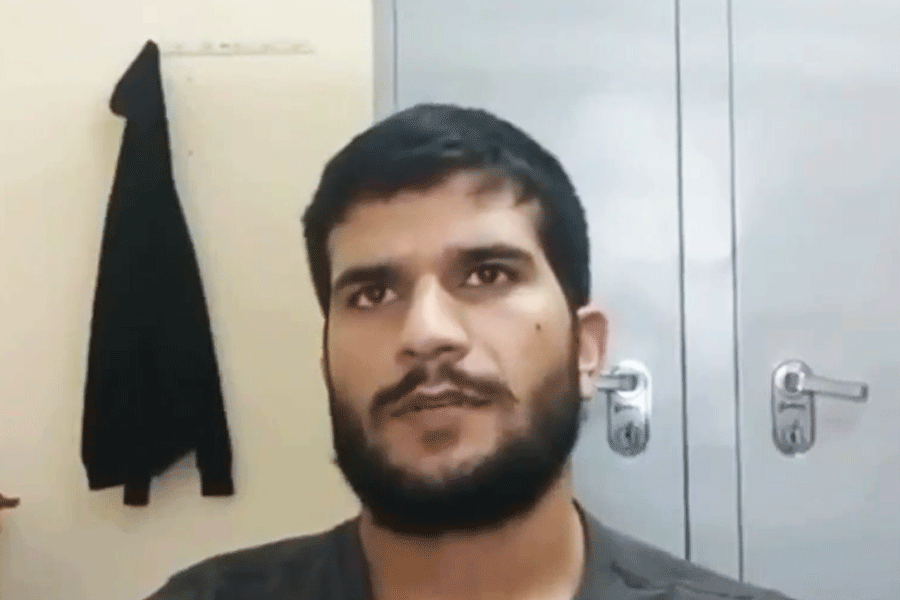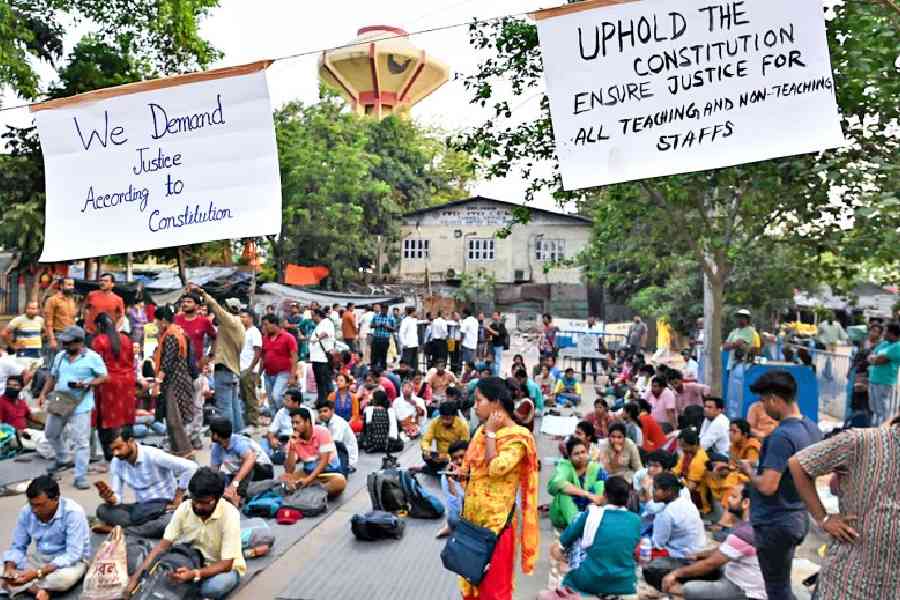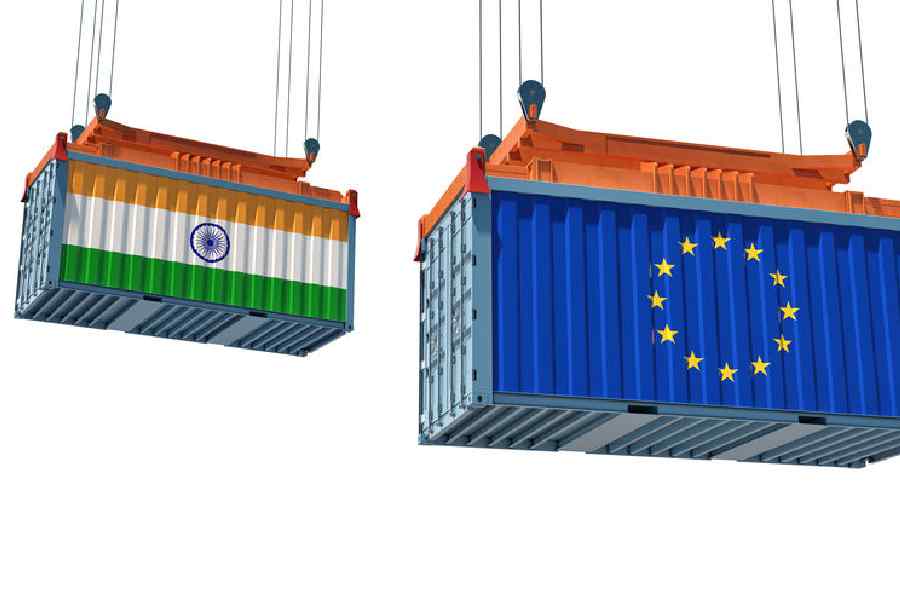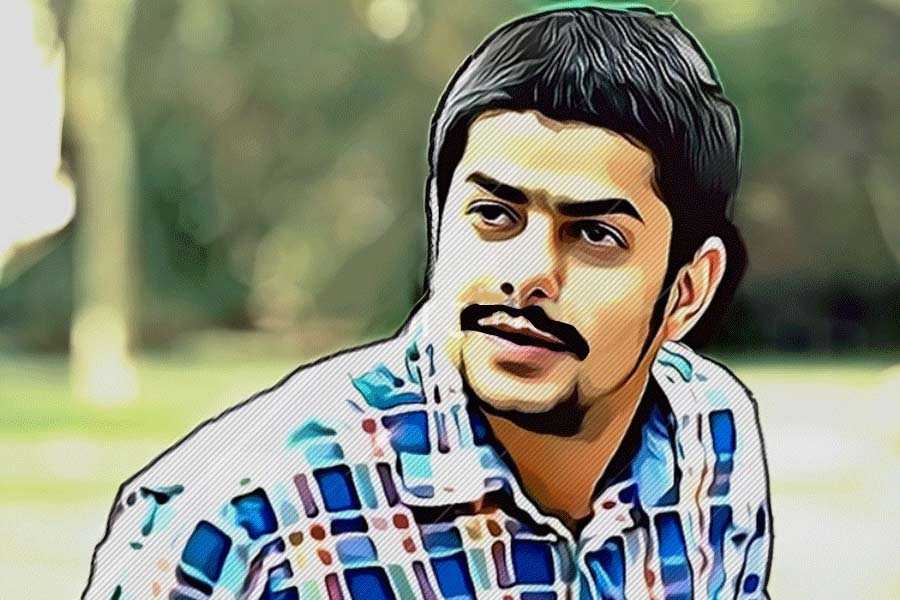 |
Executive Amit Sachdeva couldn?t believe the difference. Ten years ago his father had spent months in bed recovering from bypass surgery. But times and medical technology have changed and Sachdeva?s own bypass has been far less traumatic. He was back at work in less than two weeks. And the only reminder of the operation is a 3-inch incision near his chest. That?s tiny compared to the glaring 12-inch scar on his father?s chest.
Shyamala Das, a 42-year-old housewife, has been ever luckier ? she got away without surgery. Das was diagnosed with a benign tumour in her brain about six months ago. She was terrified by the prospect of brain surgery but then her doctor suggested the Gamma Knife Radiosurgery, a procedure that shrinks the tumour to a point where it can be melted away without actually entering the skull. There was, thus, no scar and no pain.
The medical profession is moving millimetre by millimetre into a new era. They are bringing hi-technology to the operating theatre. And with equipment like a Gamma Knife, robotic arms and endoscopes that act as a camera and light up a path inside a patient, they are cutting down on the trauma of surgery.
 |
| “Technology is improving by the day and soon, all our surgeries including multiple bypasses, will be done through MAS” Dr Pradeep Chowbey, chairman, MAS Department, Sri Ganga Ram Hospital, Delhi |
Most of the new procedures come under the broad head of what?s called Minimum Access Surgery (MAS) or even Minimum Invasive Surgery. And the name tells the whole story. These new techniques achieve the same surgical results as traditional operations but are performed with much smaller incisions and little or no cutting of muscle. Instead of a large opening in the body, the surgeons make small holes in the area that needs to be operated upon and repair or remove the organs in question.
Says Dr Pradeep Chowbey, chairman, Department of Minimal Access Surgery, Sir Ganga Ram Hospital in Delhi, ?Surgeons are finding new ways of creating access into the human body. You can reach the gall bladder by making a big incision in your abdomen or by making small incisions by using the right equipment and technique.?
How is this done? Basically, in many operations, surgeons make keyhole-sized incisions through which they insert an endoscope ? that?s a telescope with a miniature camera attached. The camera and fibre optic lights mounted on the endoscope gives a clear picture of the problem inside the patient?s body via digital images projected on a TV camera. ?Once we have a view, we insert other necessary equipment and solve the crisis by either repairing or removing the organ,? adds Chowbey.
Chowbey objects to calling these procedures ?Minimal Invasive? because he argues that the invasion still remains. ?We are still invading the body. If a kidney needs to be removed, it is still removed. However, because technology has improved, we can now remove it with a much smaller incision and reduce the patient?s discomfort,? he adds.
Obviously, a smaller incision helps in more ways than one. For a start, the operation probably finishes faster because the doctor need not waste time cutting and then suturing back a big wound.
Take the example of what happens in a gall bladder operation. Conventionally, the operation takes about 30 minutes but done the modern way it?s over in 10 minutes. Similarly, a nephrectomy (kidney removal) used to take about two hours but can now be done in 40 minutes.
Incidentally, Chowbey?s quickest gall bladder surgery was performed in a record four minutes and 28 seconds. Thus, the patient is under anaesthesia for much less time, which in turn reduces the chances of complications arising from his reaction to anaesthesia.
 |
| “The Gamma Knife directs rays into the tumour, thus melting it away. The procedure does not involve opening of the skull” Dr Mahdeep Singh Gaur, neurosurgeon, Vimhans |
That?s obviously not the only advantage of wrapping up surgery quickly with smaller wounds. Much less blood is lost this way and the need for transfusions reduced after the operation. Moreover, scarring is minimal unlike the ghastly scars caused by traditional surgery, which typically requires large incisions through skin and muscle tissue. Besides, patients experience less pain so they don?t need as many painkillers after the operation as they did before.
However, the biggest advantage of MAS is that patients are back on their feet faster than before. Says Dr Yash Gulati, senior orthopaedic surgeon at Apollo Hospital, who conducts knee and joint replacement surgeries using MAS, ?Patients suffering from slip discs who are operated using microdiscectomy or MAS of the spine are made to walk on the first post-operative day itself and can be discharged within a day.?
Getting home faster is, itself, part of the healing process. Says Shanta Majumdar, who had a nephrectomy, through MAS: ?I was in the hospital for just about three days and being back home made me feel happier and better. Besides, the wound itself was so small that it took hardly any time to heal.?
But have the new procedures developed well enough to work in most surgeries? According to most doctors, in the next decade more than 70 per cent of all surgeries will be performed using MAS. Says Dr Chowbey, who conducts about 20 MAS a day, ?From gall bladder and hernia procedures to surgery of the spine, stomach, spleen, colon, kidney and other organs, MAS has proved to be a better option than regular surgery.?
In certain fields, it?s possible to eliminate surgery altogether. This is especially true for diagnostic procedures like biopsies. Until recently, a part of the tumour had to be taken out for study, by a procedure involving minor surgery. Today, tumours can be studied using a dye and X-ray. A catheter is inserted through a hole and a special fluid called a contrast medium or dye is injected. This fluid is visible on an X-ray, and the pictures are obtained. Based on these the doctors make their diagnosis.
Also for neurosurgeries that involve the spine and the brain, patients today have an option of what is called Gamma Knife radiosurgery, which is essentially a procedure used to melt benign brain tumours. Says Dr Mahdeep Singh Gaur, neurosurgeon, Vimhans, ?This equipment directs gamma rays into the tumour, thus melting it away. The procedure does not involve opening of the skull and the patient spends only 48 hours in the hospital.?
 |
| “Patients suffering from slip disc operated on using MAS are made to walk within 24 hours and released after a day” Dr Yash Gulati, senior orthopaedic surgeon, Apollo Hospital |
Besides, Vimhans in Delhi, the only other hospitals to use Gamma Knife therapy now are the Hinduja Hospital in Mumbai and the All India Institute of Medical Sciences (AIIMS) in Delhi.
For patients who cannot be treated with Gamma Knife, there?s a technique called stereotactics in which the size of the tumour is reduced before surgery. Mita Ahmed was one patient who benefited from the new technique. Ahmed had been suffering from a tumour in her brain, which had to be surgically removed. But, instead of making a huge incision in her skull, the doctor initially inserted what?s called stenting equipment through a hole near the groin and blocked the blood supply to the tumour, thus shrinking it. ?Once the tumour is small, it can be removed without causing much damage to the rest of the brain area using MAS,? says Gaur.
However, MAS is not just effective in removing organs and tumours, it also works with implants and grafts. Take the example of 3-year-old Aditi Chawla, who was born deaf. The only option for her parents was to opt for a cochlear implant, which is done by opening up the skull and placing a device into the brain.
However, ENT surgeon J M Hans of Ram Manohar Lohia hospital came to Aditi?s rescue and conducted the cochlear implant by creating a 1.6 mm tunnel just outside the ear canal, thus avoiding the need to open the skull.
Says Aditi?s mother Kiran Chawla: ?I was very scared of an open skull surgery and the pain that my baby would have to undergo. But with the new procedure, there was no trauma and we were home in four days.? Today, Hans, who is the only doctor in the country using this technique for cochlear implants conducts about five or six such surgeries in a month. The total cost of an MAS implant is about Rs 5 lakh. That?s about the same as the conventional operation.
Clearly, hospitals across the country have realised that MAS is the future of medical technology. The only catch is the investment needed, which can vary hugely. The equipment needed for Gamma Knife Surgery, for instance, costs about $4 million, which is why only a few hospitals have it currently. Also, according to Gaur of Vimhans, many hospitals do not want to invest such huge amounts in equipment because it can?t be recovered easily. The Gamma procedure costs about Rs 1.5 lakh, only a fraction of the hospital?s investment.
Nevertheless, some procedures are catching on swiftly and even smaller hospitals in Pune and Sonepat are adopting MAS techniques. However, the quality and effectiveness of the surgery depends on the maintenance and the quality of equipment purchased, says Chowbey, who is a member of the world panel that tests MAS machinery. He adds, ?India is one of the leading nations in MAS, though unfortunately, the technique is not fully developed in Mumbai and Calcutta. The eastern sector still lags behind, though hospitals such as AMRI (Advance Medical Research Institute) and Apollo in Calcutta are taking a step towards this technique.?
The cost factor is almost certainly the biggest impediment to the spread of MAS techniques. According to Dr Ashok Seth, cardiologist, Max Health Care, patients assume that MAS is more expensive than conventional surgery, and hence are sceptical about the procedure. The fact, however, is that the actual surgical cost could be slightly higher than in operations using older techniques.
 |
| “With the new technology, cochlear implants can be inserted through a hole made outside the ear canal without opening the skull” Dr JM Hans, ENT surgeon, Ram Manohar Lohia Hospital |
But, the cost of hospitalisation and patient care falls dramatically because people are home more quickly. Says Seth, ?An average heart surgery costs about Rs 1.5 lakh to Rs 2 lakh including seven-10 days hospitalisation. An MAS bypass costs the same, but the patient goes home in three days. So the average expenditure remains the same, but with the added advantage of quicker mobility and lesser pain and medication.?
However, Seth warns that in cardiology, MAS can?t be used all the time. If there are more blockages, then the heart needs to be opened up. However, there are several technological advances in this area that promise to improve the use of MAS in cardiac surgeries too. For instance, currently, robotic arms, which cost about Rs 8 crore, are being used in Escorts, Apollo and other such hospitals for what?s called beating-heart surgery. This is a procedure in which bypasses are conducted without stopping the heartbeat with the aid of a robotic arm.
That?s another area where huge advances are expected in the future. Currently, there?s extensive research on developing robotic arms that can function like a surgeon?s arm, but without the tremors. Also, doctors are limited by the fact that their fists cannot rotate 360 degrees, so they can?t reach the opposite side of an organ. ?A robotic arm can turn full-circle, so eliminating this problem. Fifteen years ago, when MAS was introduced, endoscopes were about 12mm in diameter, today the same equipment is only 2mm wide. Technology is improving by the day and soon all our surgeries including multiple bypasses will be done through MAS,? says Chowbey. And that day is not very far away.
Photographs by Rajesh Kumar and Prem Singh
Benefits
• Minimum Pain
The surgeons don?t need to make big incisions and therefore, the actual surgery wound is smaller and less painful. Instead of a 12-inch cut, there?s a 3-4 inch incision and that reduces the post-operation trauma.
• Minimum Scarring
There are no ugly scars to remind patients about their encounter with the surgeon?s knife. The entry points are small keyholes, which are either bandaged or sutured back with a few stitches.
• Minimum Medication
As the wounds are small, smaller amounts of pain-killers are administered. So, the patient can eat and drink normal food sooner than in conventional surgery.
• Early Mobilisation
Patients can check out of hospital more quickly and as wounds heal faster, they are able to return to normal life sooner.
• Comparative Costs
The actual surgery may cost more but the total cost of treatment remains the same as patients usually spend less time in hospital.

